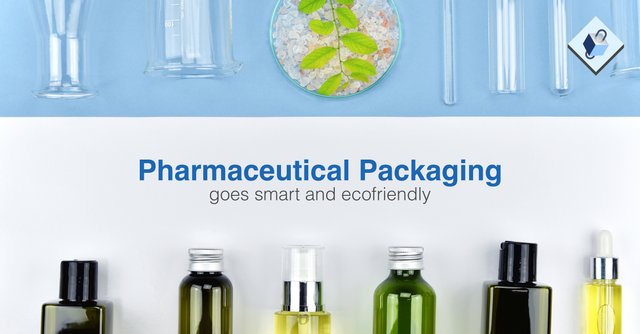Pharmaceutical packaging goes smart & ecofriendly

Pharmaceutical packaging is a crucial sector of the global packaging market: valued US$ 74.57 billion in 2016, according to Global Pharmaceutical Packaging Market Report published by Research cosmos, it’s expected to register a CAGR of 7.76% over the forecast period (2017–2025) to reach US$ 144.00 billion by 2025.
North America dominated the global pharmaceutical packaging market and the regional market with a value of US$ 31.56 billion in 2016 and is expected to retain market dominance throughout the forecast period, due to frequent product innovations through extensive research and development activities by the major manufacturers operating in this field. As an example, LDP (low-density polyethylene) is being extensively used by the pharmaceutical packaging manufacturers as it’s safe for the storage of non-sterile grade of pharmaceutical liquids. Furthermore, the region has various quality standards such as ISO 14001, ISO 9001 and OHSAS 18001, to ensure the quality of the materials used for the manufacturing of pharmaceutical packaging. Rapid penetration of major companies of the pharmaceutical industry has made Asia-Pacific the fastest growing market, with a CAGR of 10.37%, coupled with the rapid penetration of major companies operating in the field of pharmaceutical packaging in the emerging economies such as India, Japan, and China, the increasing urbanization, an improvement in health care services, and more severe laws to regulate the counterfeit medicines. In 2016, approximately 113 million counterfeit tablets were seized by the World Customs Organization (WCO), out of which 97% were manufactured in India and China. Such incidences are expected to fuel the growth of the pharmaceutical packaging market in the Asia Pacific.
Rapid penetration of major companies of the pharmaceutical industry has made Asia-Pacific the fastest growing market, with a CAGR of 10.37%, coupled with the rapid penetration of major companies operating in the field of pharmaceutical packaging in the emerging economies such as India, Japan, and China, the increasing urbanization, an improvement in health care services, and more severe laws to regulate the counterfeit medicines. In 2016, approximately 113 million counterfeit tablets were seized by the World Customs Organization (WCO), out of which 97% were manufactured in India and China. Such incidences are expected to fuel the growth of the pharmaceutical packaging market in the Asia Pacific.
In 2017, in Italy, the pharmaceutical market has also registered a significant improvement, reaching 21,6 billion euros, with a growth of 2,9% (IQVIA Italia) and a relative improvement of the pharmaceutical packaging market: in just one year 278 billion of pharmaceutical packages have been sold (Comieco 2017).

We are talking about billions of plastic bottles (the most used in pharmaceutical packaging market), blister packs and re-fillable syringes, mainly made of plastic, polymers, aluminum foil and glass: the fluctuating price of the raw material at the base of hose products, as in all the others packaging sectors of the market, strongly influences the price, increasing as a consequence, sale of counterfeit medicines.
As people will, unfortunately, always be in need of pharmacies, pharmaceutical packaging market is a business that continues to gain demand from all corners of the globe, even if it varies a lot depending on county’s policies, manufacturing processes, technologies and innovation, used cost structures, import/export, pharmaceutical packaging supply, consumption figures, market segmentation, geographical regions, current industry news and various happenings.
But what is mostly influencing the global pharmaceutical packaging market is rising demand for eco-friendly and biodegradable packaging and pre-fillable syringes: while up to less than ten years ago, pharmaceutical packages were made sparing no expense, using bulky, expensive and not-recyclable materials today green economy drastically changed the way people are looking at environmental problem and also pharmaceutical packaging sector has started to be concerned about drug wastage and plastic pollution and to think of adopting alternative modes of packaging.
Pharmaceutical packaging production is, indeed, an extremely thorny issue: one has to be truly informed of all the governmental rules and laws for pharmacies preservation, be able to use a packaging that can always assure integrity preservation, external environment resistance (above all against photo-sensible molecules) and protection from impacts and vibrations. Pharmaceutical packages also have to have a double protection and be immediately recognizable, with a clear, immediate and highly-communicative graphic, which also has to follow specific regulations, as any change in packaging or label has first be approved by the local Department of Health.
U.S. Drug Supply Chain Security Act (DSCSA) and EU 2016/161 guideline are going to introduce more security and eco-friendly standards to the actual regulations: companies which want to be leader in the field should follow them strictly, but also be able to propose solutions to respect the environment, assure pharmacies protection and produce an efficient graphic communication.